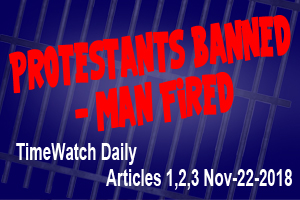
The Lisbon Earthquake
TimeWatch Editorial
April 26, 2016
The Lisbon earthquake has been recognized for years as the benchmark in historic catastrophic occurrences. On November 1, 1755, at 9:40 in the morning, what was described as one of the most destructive and deadly earthquakes in history, broke the silence of the earth, killing between 60,000 and 100,000 people. The quake itself was not the only event of the catastrophy, there was a Tsunami, then a fire. By the time it was all over most of the city of Lisbon was completely destroyed. Listen to how the New World Encyclopedia describes it:
“The earthquake struck on the morning of November 1, the Catholic holiday of All Saints' Day. Contemporary reports state that the earthquake lasted between three-and-a-half and six minutes, causing gigantic fissures five-metres (16 ft) wide to appear in the city center. Survivors rushed to the open space of the docks for safety and watched as the water receded, revealing a sea floor littered by lost cargo and old shipwrecks. Approximately forty minutes after the earthquake, an enormous tsunami engulfed the harbor and downtown, rushing up the Tagus River. It was followed by two more waves. In the areas unaffected by the tsunami, fire quickly broke out, and flames raged for five days.” The New World Encyclopedia
It should be known that Lisbon was not the only Portuguese city that was affected by this destructive event. The Encyclopedia declares that the entire southern part of the country was hit.
“The shock waves of the earthquake were felt throughout Europe as far as Finland and North Africa. Tsunamis as tall as 20 meters (66 ft) swept the coast of North Africa, and struck Martinique and Barbados across the Atlantic. A three-meter (ten-foot) tsunami hit the southern English coast. Galway, on the west coast of Ireland, was also hit, resulting in the partial destruction of the "Spanish Arch." The New World Encyclopedia
Now when you compare the record of the New World Encyclopedia with the detail contained in the Great Controversy, you see the accuracy of the historical evidence.
“At Lisbon “a sound of thunder was heard underground and immediately afterward a violent shock threw down the greater part of that city. In the course of about six minutes sixty thousand persons perished. The sea first retired, and laid the bar dry, it then rolled in, rising fifty feet above its ordinary level.” “The most extraordinary circumstance which occurred at Lisbon during the catastrophe, was the subsidence of the new quay (harbor), built entirely of marble, at an immense expense. A great concourse of people had collected there for safety, as a spot where they might be beyond the reach of falling ruins; but suddenly the quay sunk down with all the people on it, and not one of the dead bodies ever floated to the surface.” {GC88 305.1}
One more comparison would be worthwhile. The New World Encyclopedia details one area of destruction that stood out.
“The earthquake also damaged major churches in Lisbon, namely the Lisbon Cathedral, the Basilicas of São Paulo, Santa Catharina, São Vicente de Fora, and the Misericordia Church. The Royal Hospital of All Saints (the largest public hospital at the time) in the Rossio Square was consumed by fire and hundreds of patients burned to death. The tomb of national hero Nuno Álvares Pereira was also lost. Visitors to Lisbon may still walk the ruins of the Carmo Convent, which were preserved to remind Lisboners of the destruction.” The New World Encyclopedia
Compare that description with the Great Controversy, page 305
“The earthquake happened on a holy day, when the churches and convents were full ofpeople, very few of whom escaped.” “The terror of the people was beyond description. Nobody wept; it was beyond tears. They ran hither and thither, delirious with horror and astonishment, beating their faces and breasts, crying, 'Misericordia! The world's at an end!' Mothers forgot their children, and ran loaded with crucifixed images. Unfortunately, many ran to the churches for protection; but in vain was the sacrament exposed; in vain did the poor creatures embrace the altars; images, priests, and people were buried in one common ruin.” “Ninety thousand persons are supposed to have been lost on that fatal day.” {Great Controversy 305.2}
The Lisbon Earthquake grabbed the attention of the entire world. It was indeed an important sign, a fulfillment if you will of the Biblical Prophecy of the opening of the sixth seal.
Revelation6:12 - And I beheld when he had opened the sixth seal, and, lo, there was a great earthquake; and the sun became black as sackcloth of hair, and the moon became as blood;
Revelation 6:13 - And the stars of heaven fell unto the earth, even as a fig tree casteth her untimely figs, when she is shaken of a mighty wind.
That was 1755; we are much closer to the return of our Lord than during that event. Are you ready?
Cameron A. Bowen







